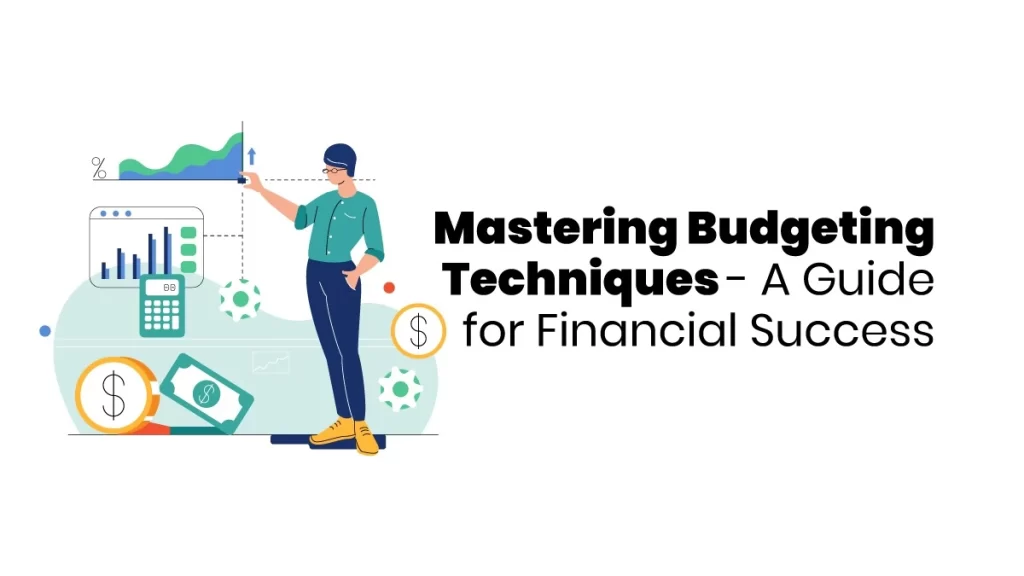Managing your money starts with budgeting. Whether saving for something big or trying to control your spending, knowing how to budget is vital. The budgeting techniques are a complete financial plan that guides a company’s actions, helps decision-making, and supports achieving strategic goals. Collaboration and feedback are essential for building a successful master budget. With them, the budget may accurately reflect how the company operates, which could hinder reaching its financial goals.
Types of Budgeting Techniques
Some kinds of budgeting techniques need to be followed for financial success. Mastering budget techniques can be used in four kinds of budgeting. Let’s read about types of budgeting;
Incremental Budgeting
Incremental budgeting takes last year’s numbers and adjusts them up or down by a percentage to set this year’s budget. It’s popular because it’s simple and easy to use. This method works well when costs stay about the same each year. However, it has some problems:
- Inefficiency: Managers might not try to save money if they know they can get a yearly budget increase.
- Extra Padding: Managers might ask for more money than needed to avoid going over budget, which can lead to wasted funds.
- Ignoring Changes: This method doesn’t consider external factors like inflation, assuming costs will only change by a set percentage.
Activity-Based Budgeting
Activity-based budgeting starts from the top and determines the resources needed to meet the company’s goals. For example, if a company wants to earn $100 million, it first looks at what activities are needed to reach that goal and then calculates the cost of those activities.
Value Proposition Budgeting
In value proposition budgeting, the budgeter asks:
- Why is this amount in the budget?
- Does this item add value for customers, staff, or other stakeholders?
- Does the value of this item outweigh its cost? If not, is there another good reason for the cost?
This approach ensures that everything in the budget benefits the business. It helps avoid unnecessary spending, though not as strictly as zero-based budgeting.
Zero-Based Budgeting
Zero-based budgeting techniques start from zero for each department, and every expense must be justified from scratch. No spending is automatically approved. This strict method helps avoid unnecessary costs by focusing only on essential expenses for the company to succeed.
This approach is practical when a company urgently needs to cut costs, like during financial troubles or an economic downturn. It works best for managing optional expenses rather than essential ones. However, it takes a lot of time, so companies use it only occasionally.
Levels of Involvement in the Budgeting Process
Involving everyone in the budgeting process is essential for gaining acceptance and ensuring a transparent, honest budget. However, it’s balancing between setting firm goals and getting everyone on board. Here are three different approaches that apply to all types of budgets:

Imposed Budgeting
Imposed budgeting happens when executives set company goals, and managers decide on budget targets for activities and costs based on those goals. This can work well in urgent situations where challenging goals need quick action, but it might only sometimes align with what everyone in the organization wants.
Negotiated Budgeting
Negotiated budgeting mixes top-down and bottom-up methods. Executives set some goals, but managers and employees also help create the budget. This makes it easier for everyone to stick to budget targets because they feel more involved.
Participative Budgeting
Participative budgeting starts from the bottom, with employees suggesting targets. Executives give input but mainly accept suggestions from managers and employees. Each department has the freedom to plan its budget independently.
To know more about budgeting, joining an accounting course will help you. Consider exploring the accounting training in Bangalore offered by Finprov Learning. Finprov provides a variety of best accounting courses in Bangalore, covering topics like CBAT, PGBAT, Income Tax, Practical Accounting Training, PGDIFA, DIA, GST, SAP FICO, Tally Prime, MS Excel, and more. Whether you’re a recent graduate or an experienced professional, our courses are designed to provide a comprehensive learning experience.
At Finprov, we focus on theoretical knowledge and practical training to equip you with real-world skills. We also offer placement assistance with our job-oriented courses in Kochi to help you start your career after completion. Contact Finprov today to learn more about accounting courses and enhance your career prospects for a promising future.










